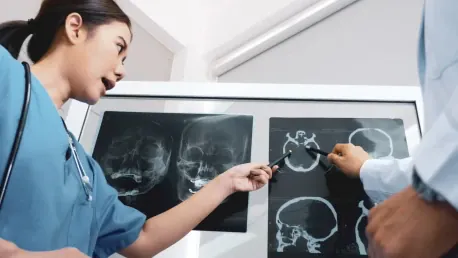In handling cancer treatments, finding the most effective and safe approaches is paramount. One of these approaches involves the crucial role of radiologists in radiation therapy (RT) planning. Despite the proven benefits of their involvement, several challenges, including reimbursement issues, hinder their full implementation. This article delves into the critical aspects of radiologists’ contributions, the current hurdles faced, and the potential solutions to ensure optimal cancer care.
Radiologists’ Impact on RT Planning
Improved Treatment Plans with Radiologist Involvement
Radiologists play a pivotal role in enhancing the quality of RT plans through diligent peer review, ensuring safe and high-quality cancer care by addressing variability in treatment plans often attributed to radiation oncologists’ limited training in diagnostic image interpretation. The findings from Dr. Ryan T. Hughes and his team at Wake Forest University underscore the significance of radiologist involvement in RT peer reviews, which notably improves treatment plans. By analyzing nearly 40,000 cases across 31 studies, the research revealed that treatment plans experienced higher rates of change when radiologists were involved (49%) compared to cases without their input (25%).
The team’s analysis not only highlighted the substantial impact of radiologist involvement but also shed light on the nature of these changes. At 47%, major changes were significantly more frequent with radiologists’ participation, while the incidence of minor adjustments exhibited a negligible increase. This disparity underscores the importance of radiologists’ expertise in identifying critical modifications that can substantially improve patient outcomes. However, while these findings emphasize the necessity of radiologists’ role in RT planning, it is essential to consider the associated logistical and financial challenges that must be overcome to integrate their participation significantly.
Logistics and Financial Barriers
Despite the clear benefits, logistical and financial barriers must be addressed to fully integrate radiologists into RT planning. A significant hurdle is the absence of reimbursement models for radiologists’ contributions. This lack of financial acknowledgment can lead to substantial time constraints and decreased overall productivity, as radiologists may spend over 60 minutes per case. Without compensation, the already high workload faced by radiologists can be further exacerbated, potentially impacting their willingness and ability to participate in RT planning regularly.
Ultimately, while radiologists have proven instrumental in enhancing RT outcomes, addressing these logistical and financial barriers is essential. Collaborative efforts must be made to foster reimbursement pathways and streamline radiologists’ roles in the RT planning process. Through the development of creative solutions and consideration of the potential cost savings from preventing treatment failures, the broader healthcare system can facilitate the inclusion of radiologists in these vital roles without compromising their productivity and engagement in other essential duties.
Potential Solutions and Structural Changes
Collaboration Models and Technological Integration
To fully realize the potential benefits of radiologists in RT planning, innovative collaboration models and structural changes must be pursued. Among the proposed solutions are virtual or in-person review options and leveraging electronic health records (EHRs) to facilitate interdisciplinary discussions. These approaches can enable efficient communication and collaboration between radiologists and radiation oncologists, ensuring that critical input from radiologists is effectively incorporated into treatment plans. Virtual reviews, in particular, can save time and resources by allowing radiologists to provide their expertise remotely, thereby addressing some logistical challenges.
In addition to collaborative models, the integration of advanced technologies, such as artificial intelligence and machine learning algorithms, can further enhance the RT planning process. By incorporating these technologies, radiologists and oncologists can work together to analyze large volumes of imaging data, identify patterns, and generate precise treatment plans tailored to individual patients. These advancements can help to streamline the planning process, reduce variability, and improve overall treatment outcomes. Technological integration can thus facilitate more effective and efficient cooperation between radiologists and radiation oncologists, optimizing cancer care for better patient outcomes.
Future Efforts for Reimbursement Pathways
When handling cancer treatments, it’s essential to find the most effective and safe methods. One key method involves the vital role of radiologists in planning radiation therapy (RT). Despite the clear benefits that come from their involvement, there are significant challenges, such as issues with reimbursement, that prevent their full implementation in clinical settings. This becomes a major hurdle in providing optimal cancer care.
This article explores the crucial contributions of radiologists to radiation therapy planning, the barriers they face, and potential solutions. It underscores how radiologists’ expertise can enhance treatment accuracy and patient outcomes. Radiologists play a pivotal role in devising precise RT plans, which are critical for targeting cancerous tissues while sparing healthy ones.
However, the healthcare system’s existing financial structures and other logistical issues often impede the full utilization of radiologists’ skills in RT planning. Addressing these hurdles is crucial to harnessing their full potential, thus ensuring that patients receive the best possible care during their cancer treatment journey.









